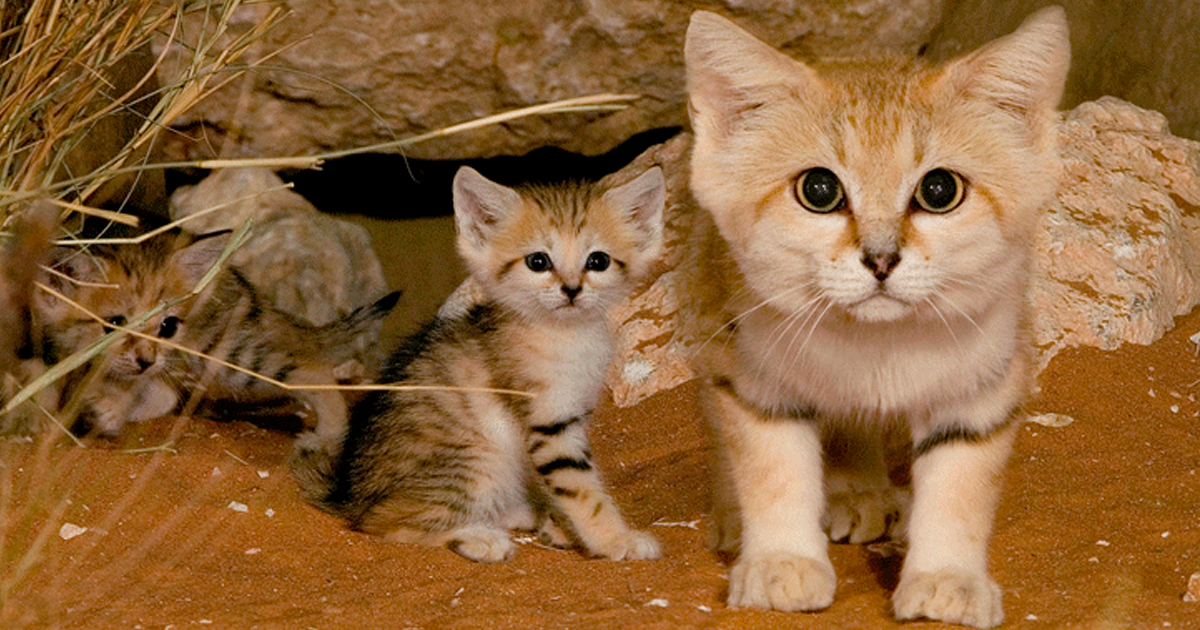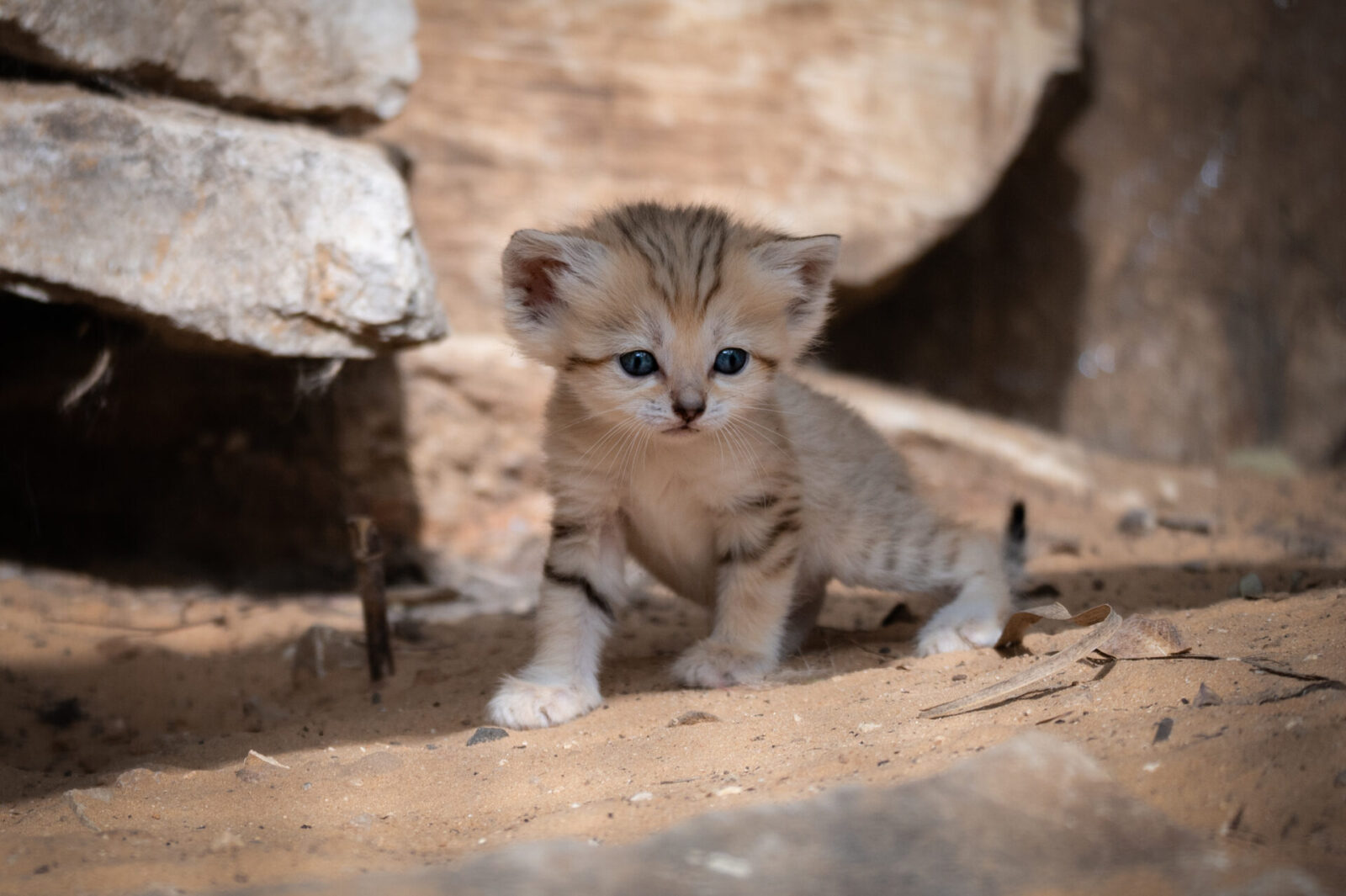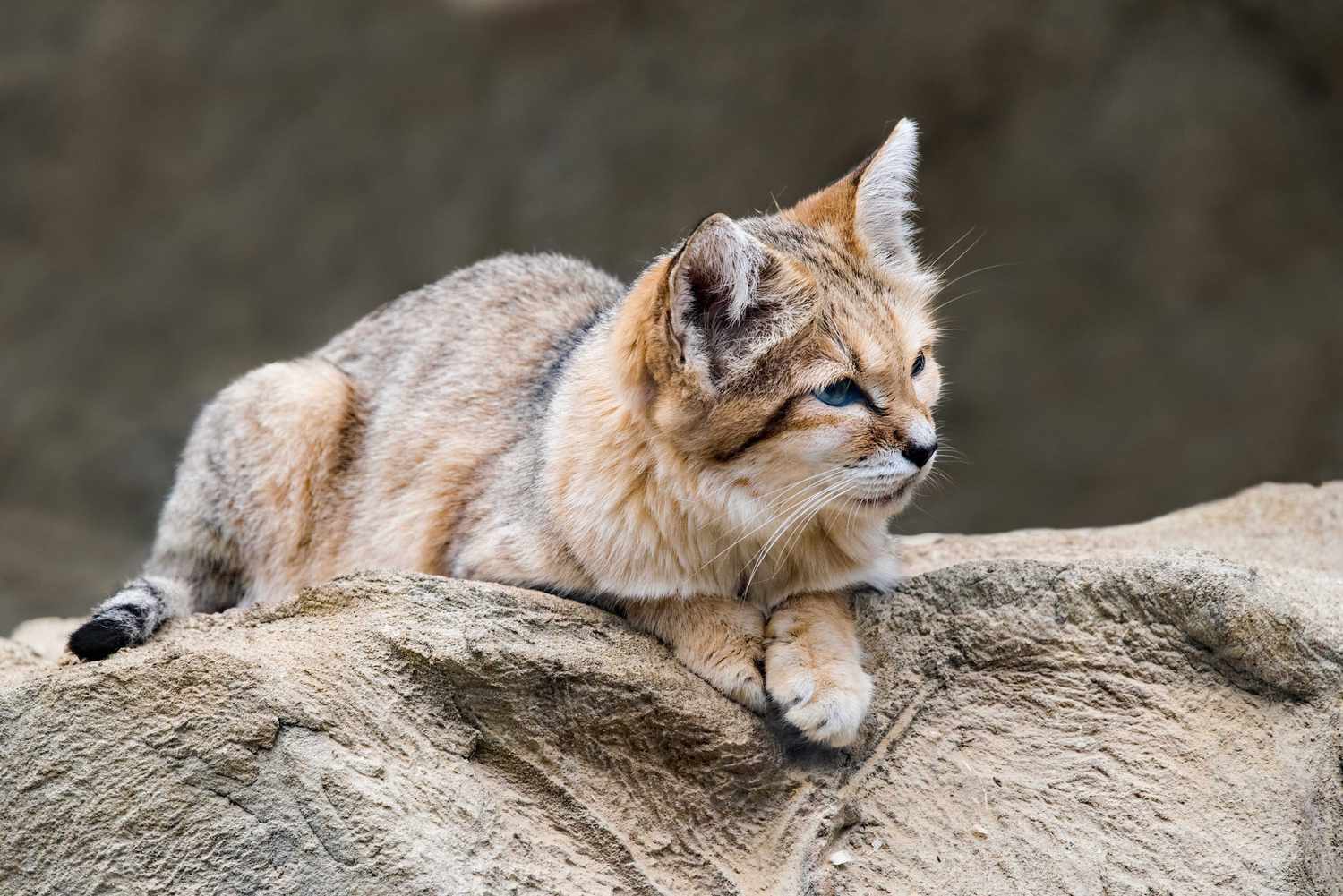I. Introduction
(A) Captivating Creatures: Introducing the Sand Cat
With its adorably round face, oversized ears, and thick fur, the sand cat (Felis margarita) is a captivating creature that has captured the hearts of many. Despite its undeniable cuteness, the sand cat is not a domesticated feline but a wild inhabitant of the world’s driest deserts. This tiny terror, the smallest wild cat species in Africa and Asia, boasts unique adaptations that allow it to thrive in harsh desert environments.
(B) Desert Dwellers: Unveiling the Habitat and Distribution
Sand cats primarily inhabit the arid deserts of North Africa, the Arabian Peninsula, and Central Asia. These regions are characterized by scorching temperatures, scarce rainfall, and limited vegetation. Sand cats excel in these harsh environments, making their homes in sandy plains, semi-desert steppes, and even the edges of ergs (large sand seas). Their preference for sandy habitats allows them to easily burrow and create dens for shelter and raising young.

II. Unveiling the Sand Cat: A Portrait of a Desert Feline
(A) Physical Characteristics: A Master of Camouflage
The sand cat’s physical features are perfectly adapted for its desert life. They are the smallest wild cat species, typically weighing only around 2 to 4 pounds and reaching a body length of 18 to 20 inches. Their thick, sandy-colored fur provides excellent camouflage against the desert landscape, allowing them to blend in with the dunes and stalk prey unnoticed. Large, wide-set ears enhance their hearing, crucial for detecting prey moving beneath the sand.
(B) Behavioral Traits: Nocturnal Hunters with a Unique Vocalization
Sand cats are primarily nocturnal creatures, emerging from their burrows at dusk to hunt under the cloak of darkness. This strategy helps them avoid the scorching desert heat during the day and allows them to capitalize on the cooler nighttime temperatures. When hunting, sand cats rely on their keen eyesight and hearing to locate prey. Unlike most other felines, sand cats don’t meow! Instead, they communicate through a variety of chirps, hisses, and growls.

III. Delving into the Sand Cat’s Diet and Hunting Strategies
(A) Dietary Habits: Opportunistic Carnivores with a Taste for Rodents and Birds
Sand cats are obligate carnivores, meaning their diet consists solely of meat. They are opportunistic hunters, preying on a variety of small animals readily available in the desert. Their primary prey includes rodents like gerbils, jerboas, and mice. They also readily consume insects, lizards, and even small birds. Sand cats are skilled hunters, utilizing their agility and speed to chase and capture prey. Their powerful legs allow them to jump surprisingly high, catching unsuspecting birds perched on low-lying vegetation.
(B) Hunting Prowess: Adapting to the Desert’s Challenges
Living in a desert presents a constant challenge when it comes to finding water. Sand cats have adapted to minimize their water needs. They obtain most of the moisture they require from the bodies of their prey. Additionally, their thick fur helps to minimize water loss through sweating. Sand cats are also incredibly efficient at burrowing. Their burrows can reach up to 10 feet deep, providing essential shelter from the harsh desert sun and offering a cool retreat during the hottest parts of the day.

IV. Exploring the Sand Cat’s Social Structure and Breeding Behavior
(A) Solitary Existence: Living a Life of Independence
Unlike many other cat species, sand cats are solitary creatures. They only come together to mate, and females raise their young alone. Males establish and defend territories, while females have smaller home ranges within the male’s territory. Interactions between individuals outside of mating season are infrequent and often limited to brief encounters.
(B) Reproduction and Parental Care: Nurturing the Next Generation
Sand cats typically breed in the spring, following a short gestation period of around 50-60 days. Females give birth to litters of 1-4 kittens in their burrows. The kittens are born blind and helpless and rely entirely on their mother for milk and care. Kittens begin to emerge from the burrow at around 4-5 weeks old and are weaned by around 8-10 weeks. They become independent hunters at around 6 months old and reach sexual maturity by about 1 year of age.

V. Threats Facing the Sand Cat: Conservation Efforts and the Importance of Habitat Protection
(A) Declining Populations: Threats from Habitat Loss, Human Activity, and Disease
Despite their impressive adaptations, sand cats face several threats in the wild. The primary threat is habitat loss due to human activities like desertification, agricultural expansion, and urban development. These activities destroy and fragment the sand cat’s desert homes, reducing their available prey and hindering their ability to find mates and raise young. Additionally, sand cats are sometimes hunted for their fur or captured for the illegal pet trade. Emerging diseases can also pose a significant threat to sand cat populations, especially in fragmented habitats where populations are more isolated. These combined factors have led to a decline in sand cat numbers, and the species is currently classified as “Near Threatened” by the International Union for the Conservation of Nature (IUCN).
(B) Conservation Initiatives: Protecting Sand Cats and Their Desert Ecosystems
Fortunately, there are ongoing conservation efforts dedicated to protecting sand cats and their desert habitats. These efforts include:
- Habitat Protection: Organizations work to establish protected areas and promote sustainable land use practices to conserve desert ecosystems.
- Monitoring Populations: Researchers conduct surveys and studies to track sand cat populations and identify areas where they are most vulnerable.
- Public Awareness: Raising awareness about the sand cat’s plight and the importance of desert conservation is crucial for garnering public support for protection efforts.
- Captive Breeding Programs: Some zoos and sanctuaries participate in captive breeding programs aimed at maintaining healthy sand cat populations and potentially reintroducing them to suitable wild habitats in the future.

VI. Captivating the World: The Sand Cat as a Cultural Icon
(A) Artistic Depictions: Capturing the Sand Cat’s Allure in Art and Literature
Despite their elusive nature, sand cats have captured the human imagination for centuries. Their adorable features and unique adaptations have inspired artists and writers around the world. Depictions of sand cats can be found in ancient Egyptian hieroglyphics, and they have been featured in folklore and mythology across their range. In modern times, sand cats have become popular internet celebrities, with their photos and videos garnering millions of views and capturing hearts worldwide.
(B) Online Sensation: The Sand Cat’s Rise to Internet Fame
The internet has played a unique role in raising awareness about the sand cat. Their endearing looks and playful antics have made them viral sensations on social media platforms. While these online encounters can spark interest and appreciation for the species, it’s important to remember that sand cats are wild animals and not suitable pets. The online popularity of sand cats should serve as a reminder of the importance of protecting these fascinating creatures in their natural desert habitats.
VII. Responsible Pet Ownership: Considerations Before Welcoming a Sand Cat into Your Home
(A) Understanding the Wild Nature of Sand Cats: Not Pets for the Average Household
While the internet may make sand cats seem like cuddly companions, it’s crucial to understand that they are not suitable pets. Sand cats are wild animals with specific needs that cannot be met in a typical home environment. They require a large, specialized habitat with ample space to burrow and roam. Their dietary needs are specific, and they can carry diseases that can be harmful to humans. Owning a sand cat is illegal in many places, and attempting to acquire one can contribute to the illegal pet trade, further threatening wild populations.
(B) Alternative Ways to Appreciate Sand Cats: Supporting Conservation Efforts and Ethical Sanctuaries
If you admire sand cats, there are many responsible ways to show your appreciation. You can support reputable conservation organizations working to protect sand cats and their desert habitats. Some ethical sanctuaries care for sand cats that cannot be released back into the wild due to injury or illness. These sanctuaries provide these animals with expert care and allow visitors to learn more about the species in a responsible way.
VIII. Conclusion
(A) A Desert Jewel: The Sand Cat’s Enduring Significance
The sand cat, with its captivating appearance and remarkable adaptations, is a true jewel of the desert. These tiny hunters play a vital role in maintaining the delicate balance of desert ecosystems. Their presence serves as an indicator of a healthy desert environment. By protecting sand cats and their homes, we ensure the continued survival of these fascinating creatures and the unique ecosystems they call home.
(B) Preserving the Magic of the Desert: Protecting Sand Cats and Their Habitat for Future Generations
The future of the sand cat depends on our collective efforts. Supporting conservation initiatives, raising awareness, and advocating for sustainable desert management practices are all crucial steps in ensuring the survival of this remarkable species. By working together, we can preserve the magic of the desert and ensure that future generations can marvel at the wonder of the sand cat.


